Hello all. I want to state straight out, I did not invent anything you see here. It was designed years ago. The key to its effectiveness is borrowed from the most basic hydroponic method, known as the "wick" style. Cost to build this should be less than $15 and has been reported to have a very high success rate. Oh, you do not have to use any cloning gel if you do not want to. Just note that roots will just take longer to show.
What I wanted to do was to test different common materials to use as the wicks. Original design used tiki torch wicks which are fiberglass. These are difficult to locate and are treated as a seasonal item by the few stores who do carry it. Turns out, they just are not necessary.
I tested three materials; a synthetic closed cell sponge, strips of an old cotton T shirt I had, and some tampons.
Here are the raw materials...
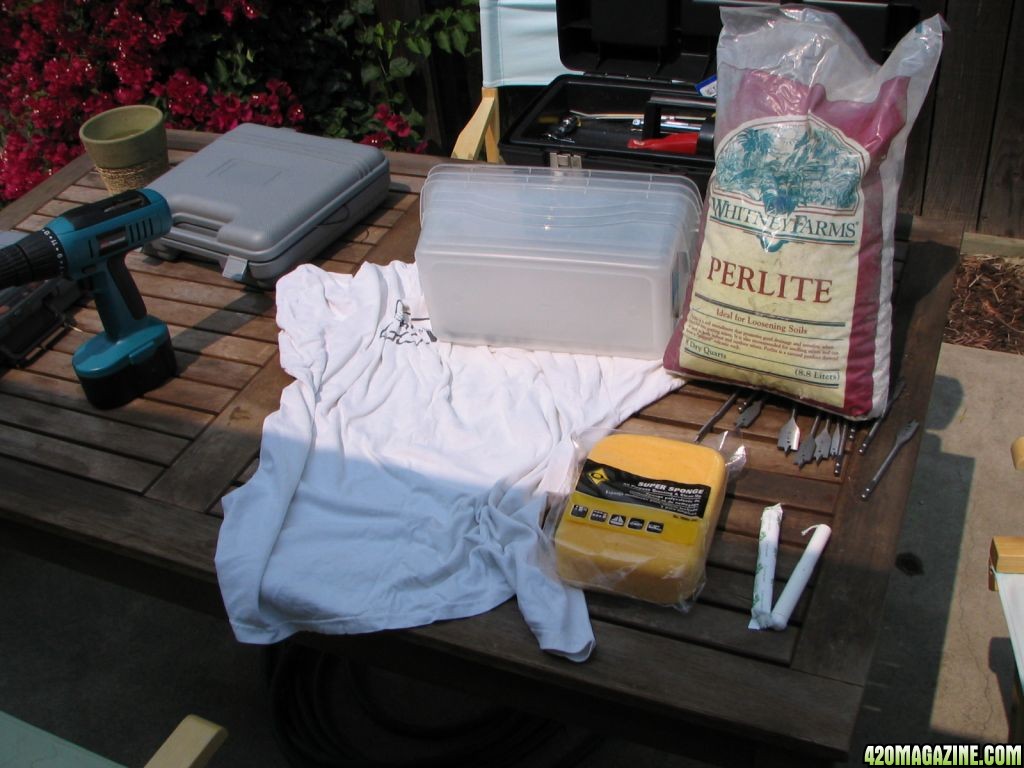
6 holes (9/16 inch) were drilled into the bottom of one of the containers and the wicks were inserted.
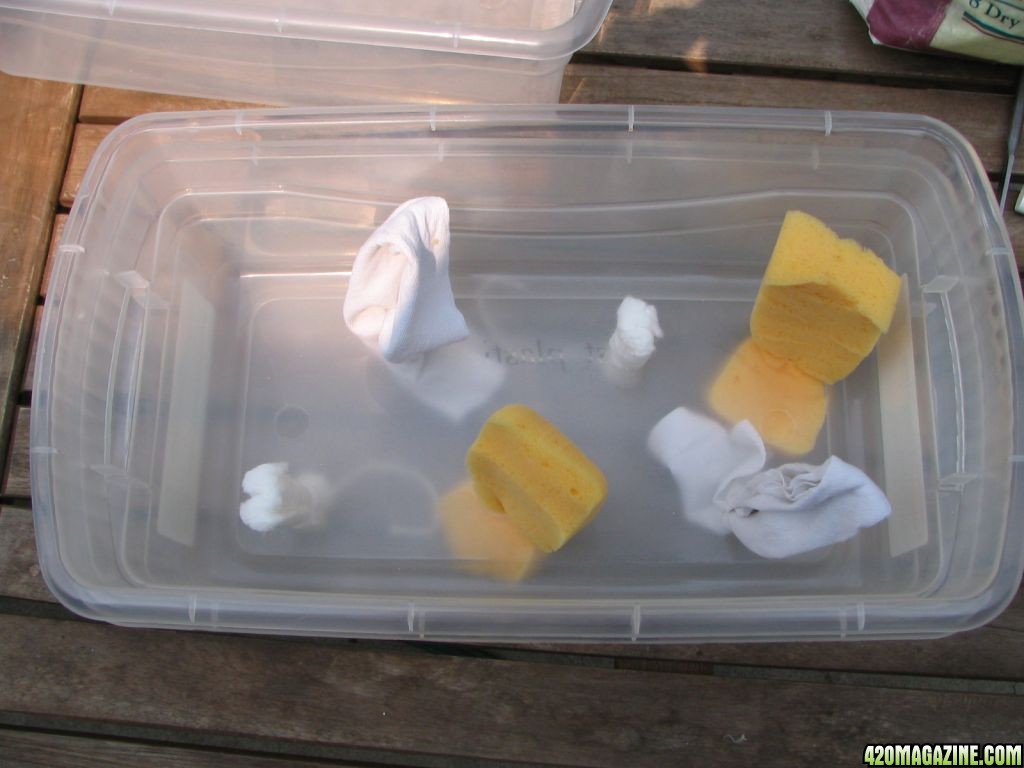
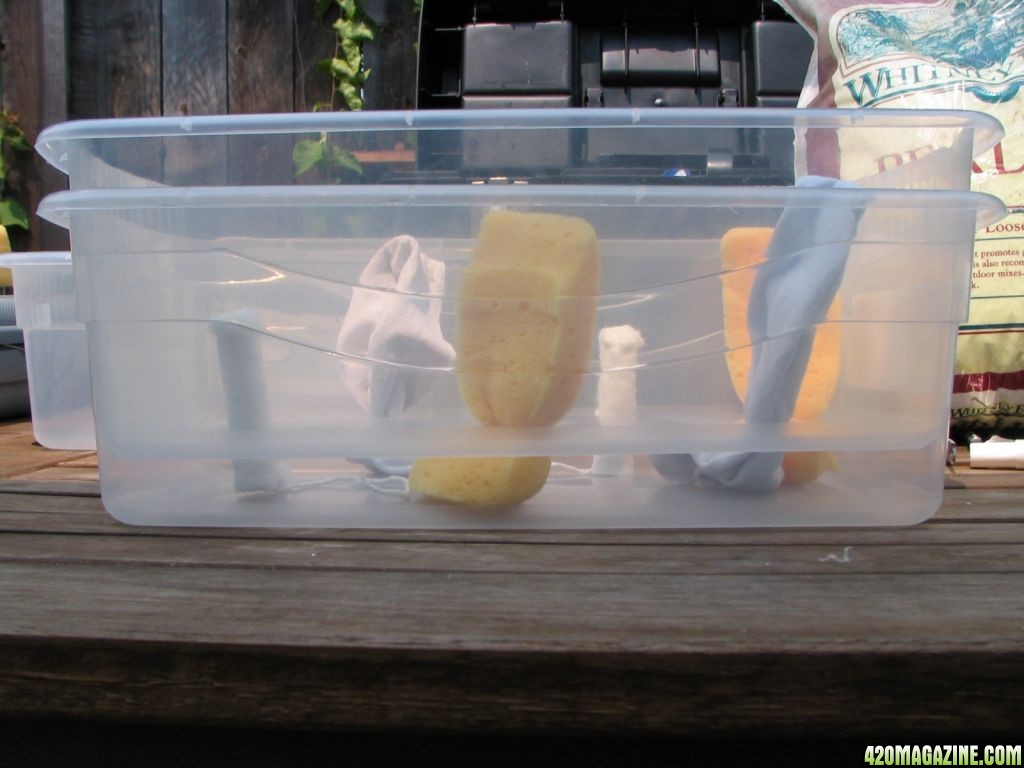
Perlite is added....
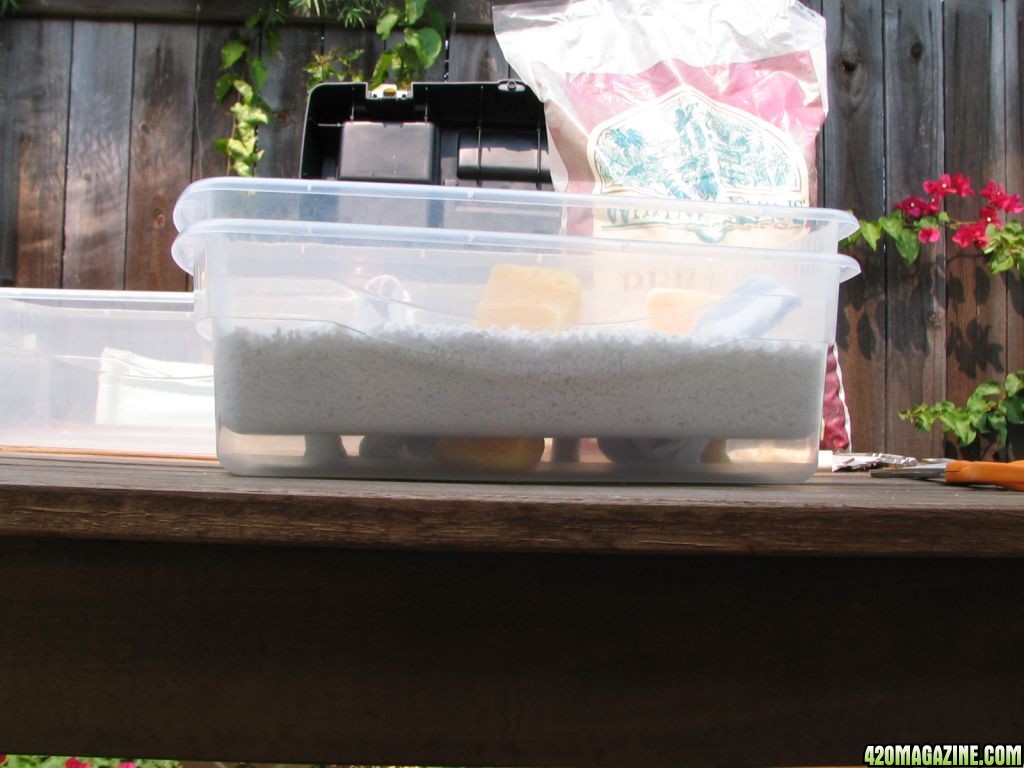
Water is added to the bottom container with some red dye.
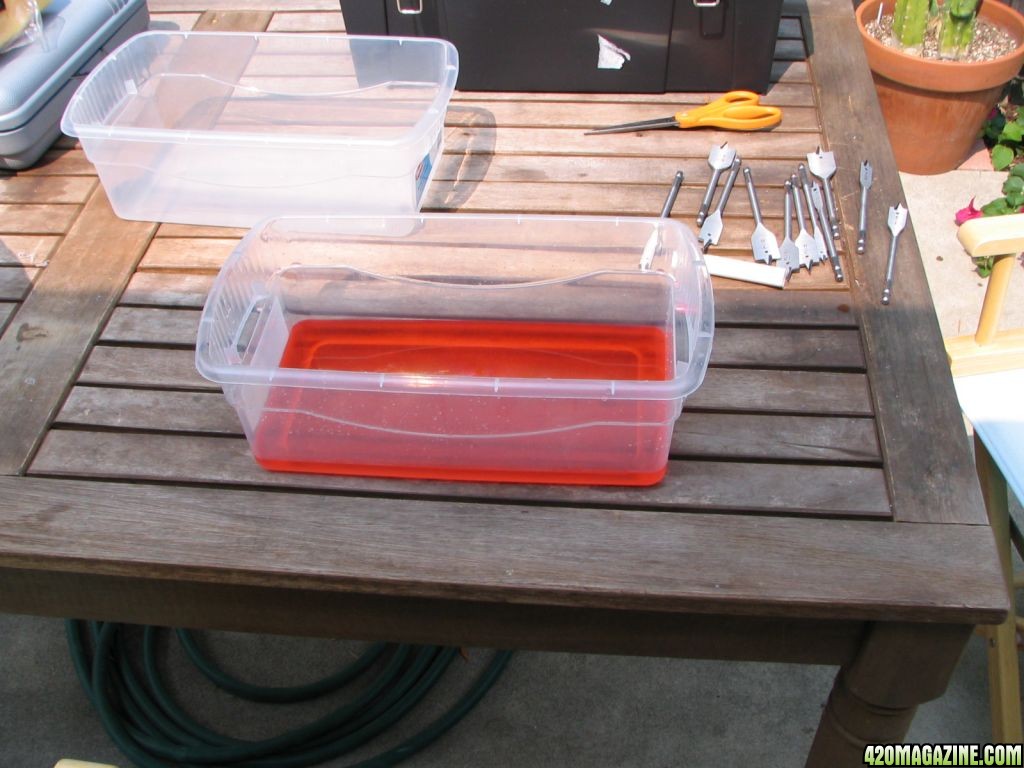
... and then the unit is assembled for the test.
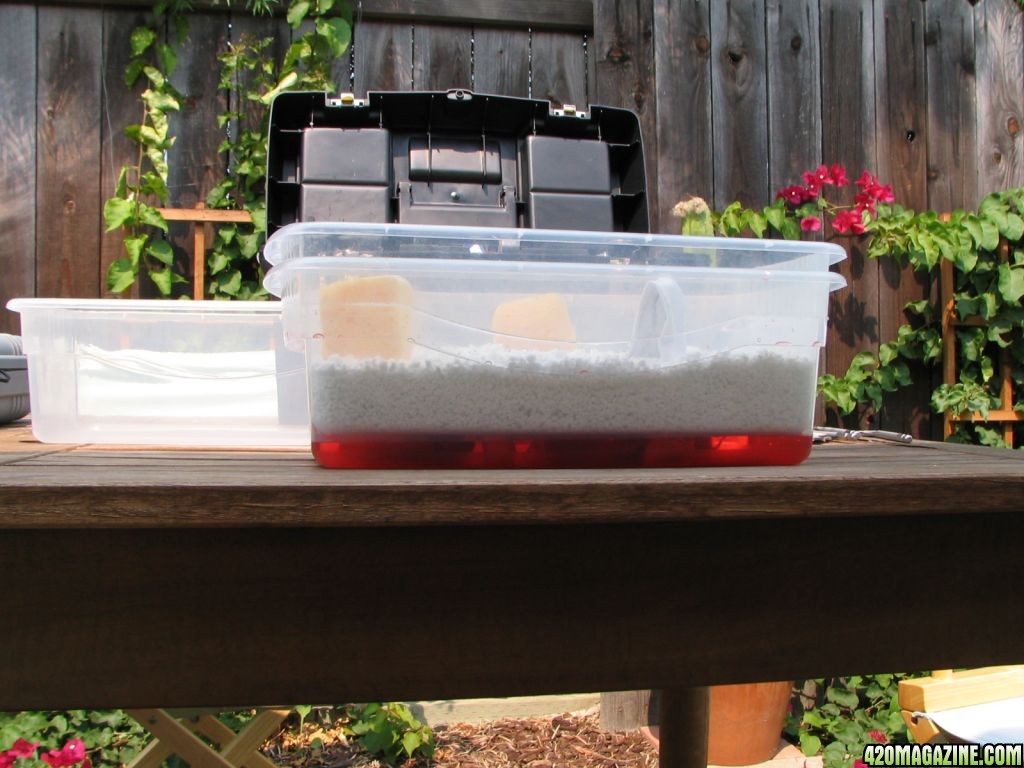
About ten minutes later, we can see that some of the wicks are working...
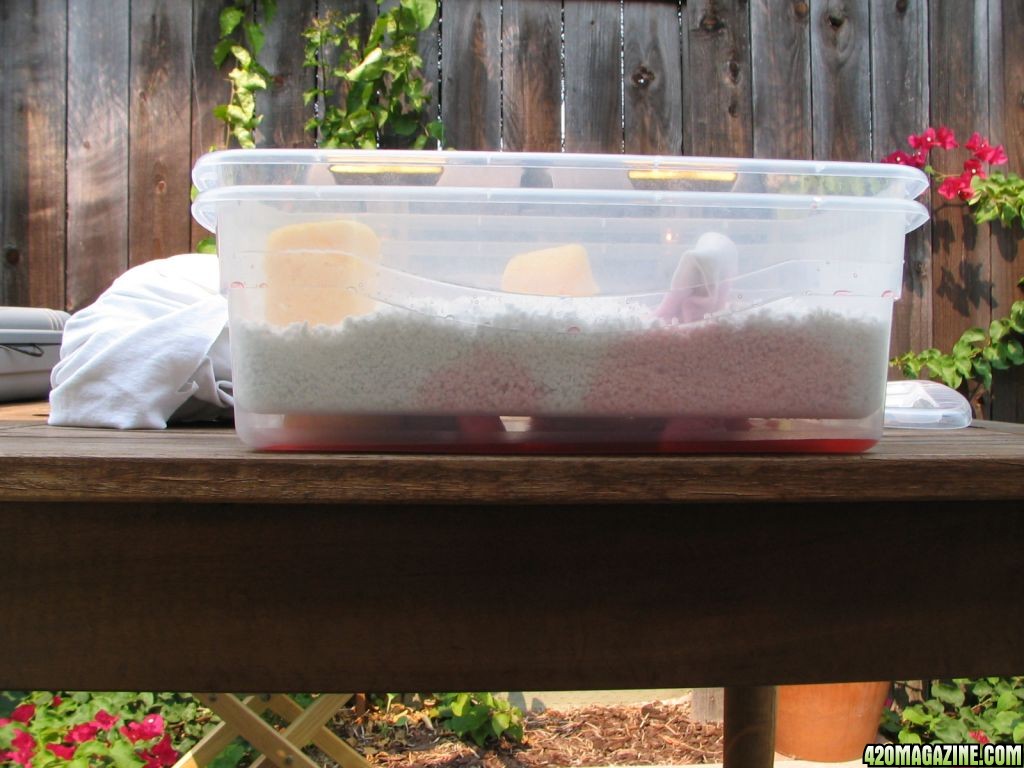
the back side...
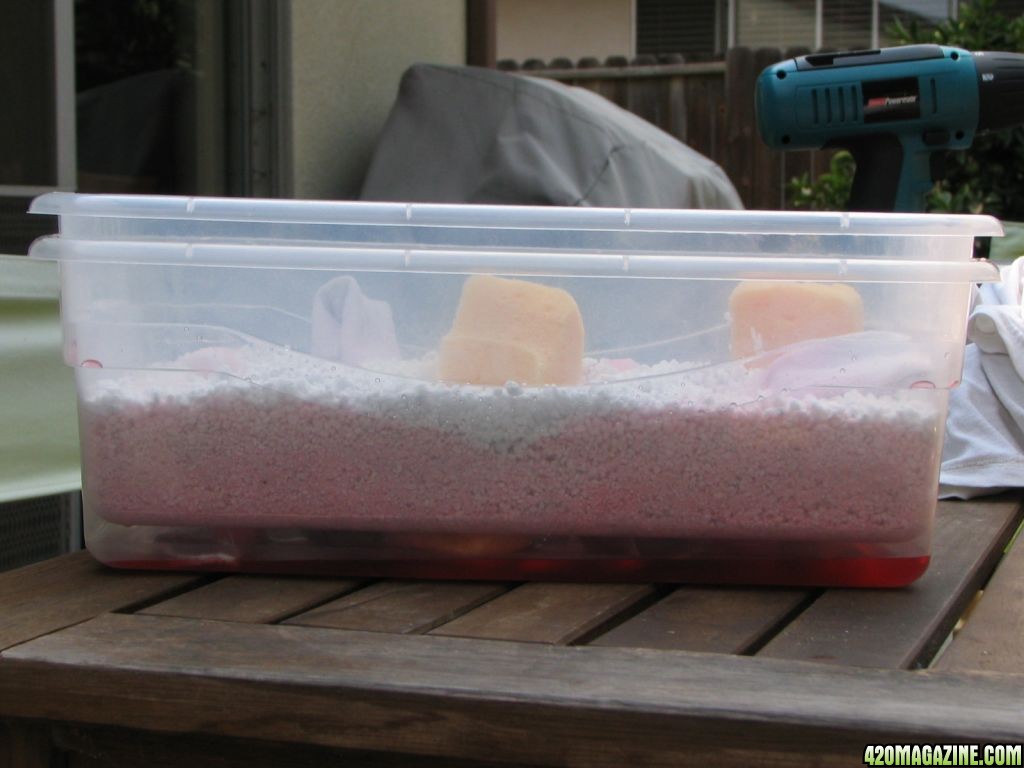
and top. What happened is the sponges are totally dry but the tampons and cotton strips work very well.
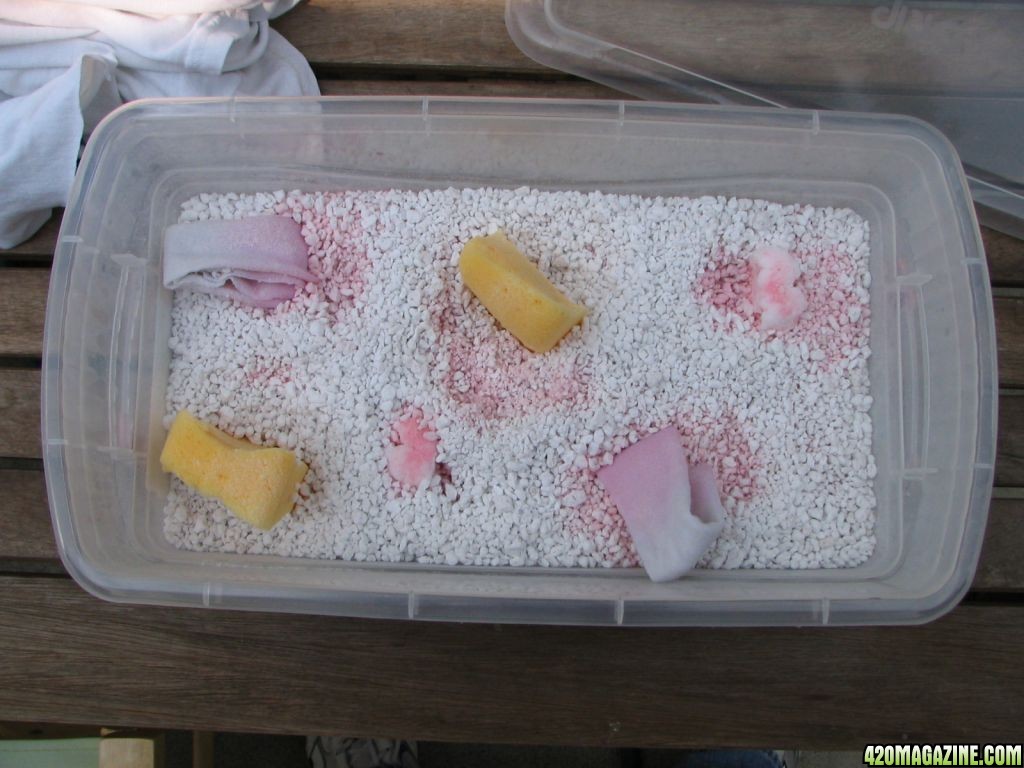
So, I would recommend using an old shirt (100% cotton) and cut it up for wicks. The tampons do work but are too short to rise to the top if the perlite is added to the recommended depth of 4 inches.
I am testing this out now with some cuttings I took last night and kept in a glass of water overnight.
What I wanted to do was to test different common materials to use as the wicks. Original design used tiki torch wicks which are fiberglass. These are difficult to locate and are treated as a seasonal item by the few stores who do carry it. Turns out, they just are not necessary.
I tested three materials; a synthetic closed cell sponge, strips of an old cotton T shirt I had, and some tampons.
Here are the raw materials...
6 holes (9/16 inch) were drilled into the bottom of one of the containers and the wicks were inserted.
Perlite is added....
Water is added to the bottom container with some red dye.
... and then the unit is assembled for the test.
About ten minutes later, we can see that some of the wicks are working...
the back side...
and top. What happened is the sponges are totally dry but the tampons and cotton strips work very well.
So, I would recommend using an old shirt (100% cotton) and cut it up for wicks. The tampons do work but are too short to rise to the top if the perlite is added to the recommended depth of 4 inches.
I am testing this out now with some cuttings I took last night and kept in a glass of water overnight.





 Anyways, use that map.
Anyways, use that map.